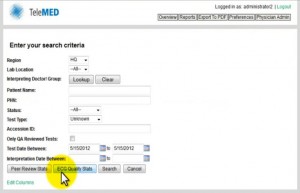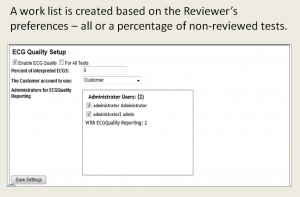There is no question that the introduction of electronic ECG management brought vast improvements in productivity, profitability and clinical outcomes.
- Processes were automated and streamlined.
- Best practices were standardized.
- Patients were given access to clinical experts regardless of their location.
- The flow of patients increased and so did the flow of revenue.
 Once users became accustomed to the benefits of electronic ECG management, the search began for other ways to wring inefficiency out of workflows. Before long users focused on the issue of connectivity, making demands such as
Once users became accustomed to the benefits of electronic ECG management, the search began for other ways to wring inefficiency out of workflows. Before long users focused on the issue of connectivity, making demands such as
- “I don’t want to enter patient demographics into my ECG management system if they already exists in my booking system.” and
- “I want my patient’s ECG results to sit in the same place as her other test results.”
The response to these and similar demands was “We can make it happen”. As a result, ECG management systems now feature open system architecture so that they can be seamlessly connected to other information systems in the same enterprise.
 All of this leads to the inevitable question, “What’s Next?” At TeleMED we believe that the next place to look for productivity gains is in the workflows related to the management of ECG tracing quality and the management of interpretation quality.
All of this leads to the inevitable question, “What’s Next?” At TeleMED we believe that the next place to look for productivity gains is in the workflows related to the management of ECG tracing quality and the management of interpretation quality.
All of our customers stress the need for constant monitoring of and improvement in ECG quality. All of them believe in and have quality management programs. However, in an environment that demands better and better service with fewer and fewer resources, all of them struggle with the time required to make these programs work. We have looked closely at the steps our customers take in conducting retrospective reviews. Based on our success in streamlining the process of acquiring test data, we are now using the same strategies to streamline the process of reviewing that data. We have even identified enhancements that we will add to our application to detect certain quality-related problems in real-time.
More to come in future posts.

